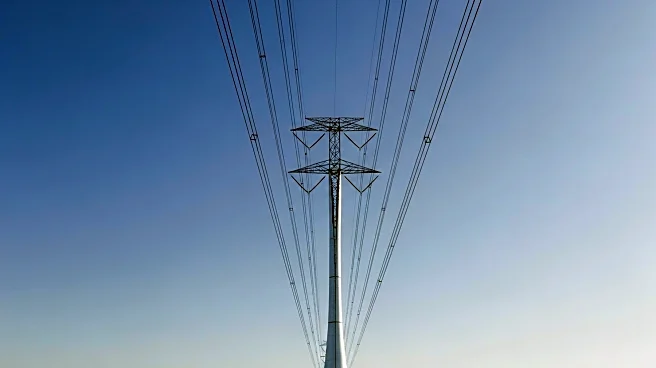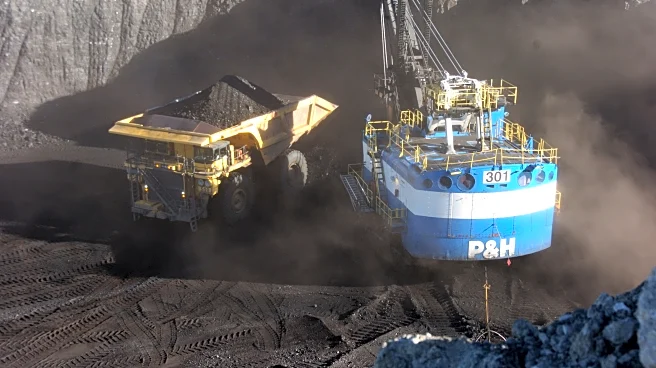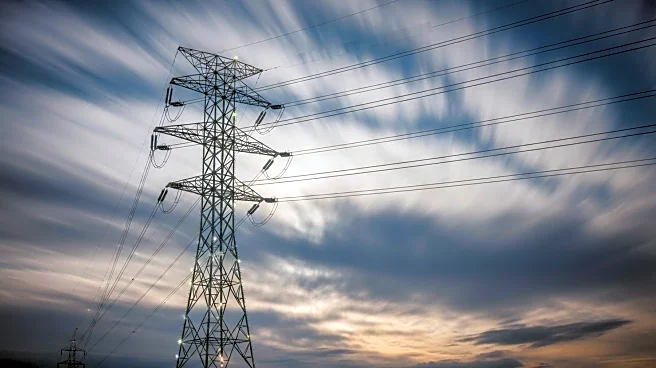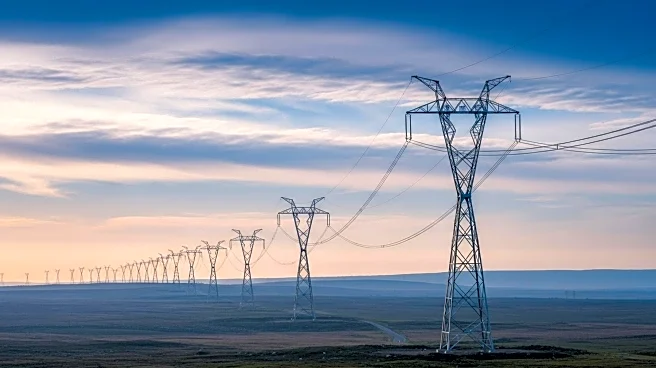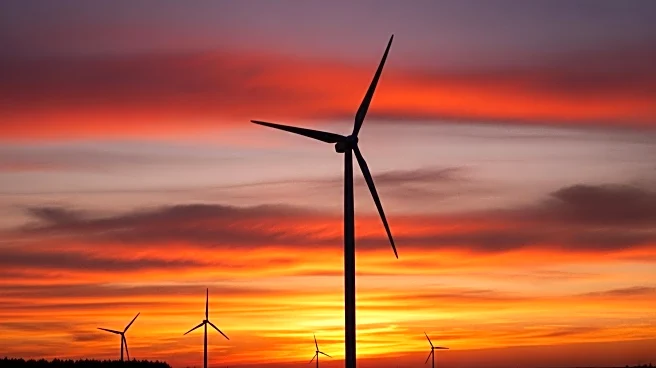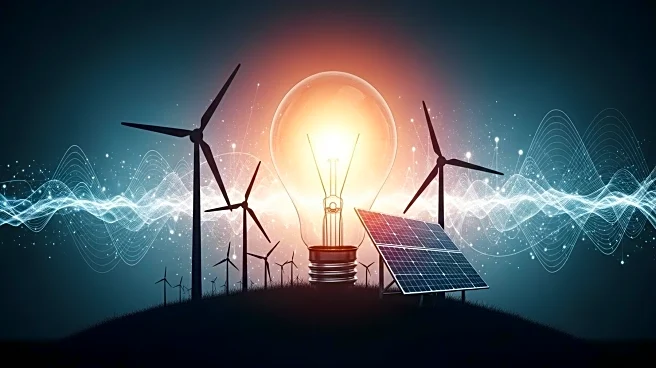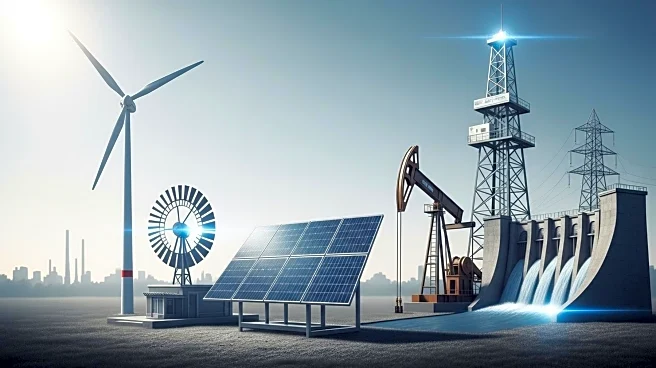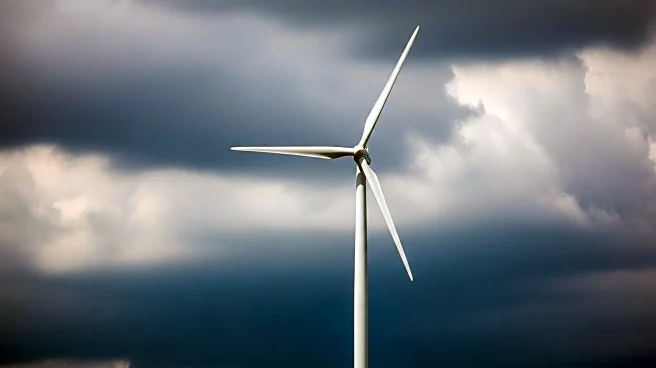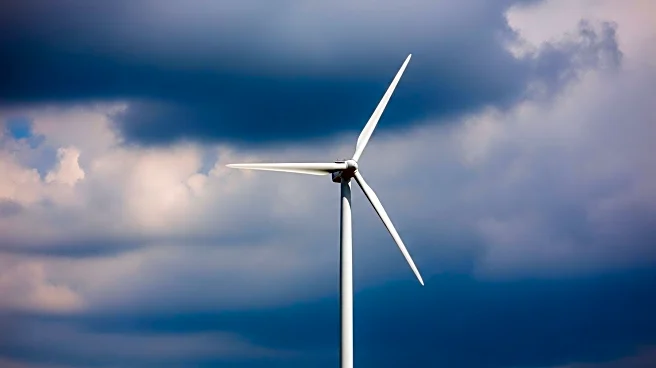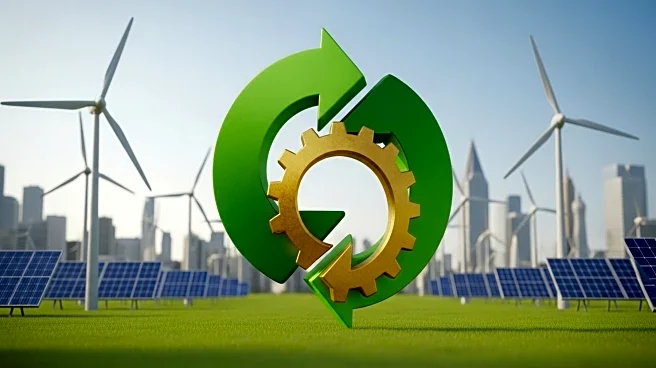What is the story about?
What's Happening?
China's State Grid Corporation has developed ultra-high-voltage direct current transmission lines at 800 kV, 1,000 kV, and 1,100 kV, forming the backbone of an interconnected national network. These systems carry electricity thousands of kilometers from inland hydro and solar basins to coastal cities. The Changji–Guquan ±1,100 kV link alone transmits up to 12,000 MW across 3,300 km. This engineering achievement is crucial for decarbonizing the grid and balancing variable renewables. The development of these transmission lines is essential for moving clean power from interior regions to industrial centers, displacing coal, and supporting the world's largest energy transition.
Why It's Important?
The ultra-high-voltage transmission lines are a significant tool for decarbonization, enabling the efficient movement of clean energy over long distances. This infrastructure is vital for reducing reliance on coal and integrating renewable energy sources into the grid. The success of these systems in China could serve as a model for other countries looking to transition to cleaner energy. However, public perception and misunderstanding about the safety of these lines could hinder progress. Accurate communication about the technology's benefits and safety is essential to maintain public trust and support for clean energy initiatives.
What's Next?
As China continues to expand its ultra-high-voltage transmission network, other countries may look to adopt similar technologies to enhance their energy infrastructure. The success of these systems could influence global energy policies and encourage investment in renewable energy projects. Ensuring public understanding and acceptance of these technologies will be crucial for their widespread adoption. Stakeholders, including governments and energy companies, will need to focus on educating the public about the benefits and safety of ultra-high-voltage transmission lines to prevent misinformation from slowing progress.
Beyond the Headlines
The development of ultra-high-voltage transmission lines highlights the intersection of engineering and environmental policy. It underscores the importance of technical accuracy in public discourse to prevent fear and misinformation from derailing clean energy projects. The lessons learned from China's experience could inform global strategies for energy transition, emphasizing the need for clear communication and public engagement in infrastructure development.
AI Generated Content
Do you find this article useful?
